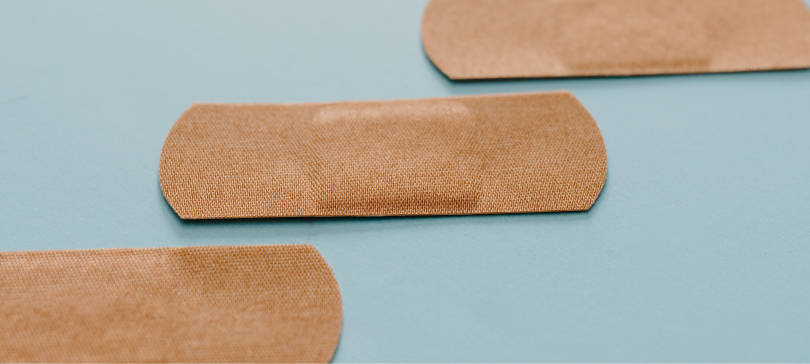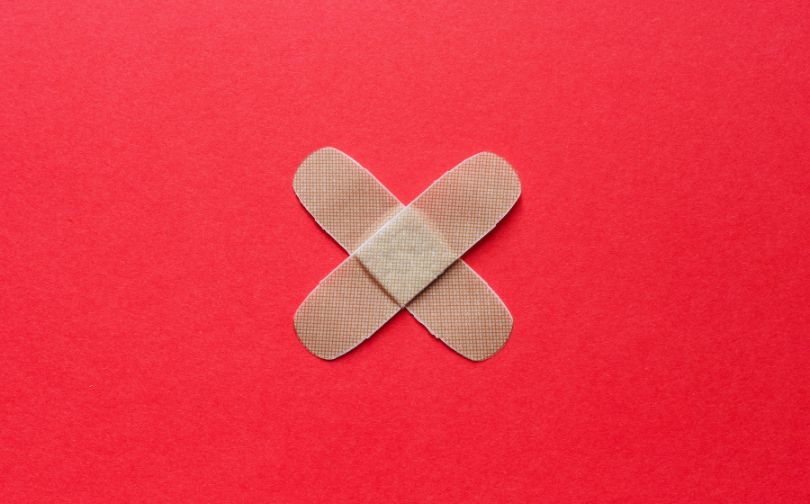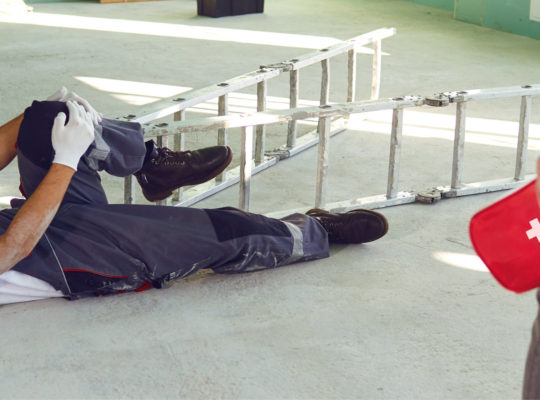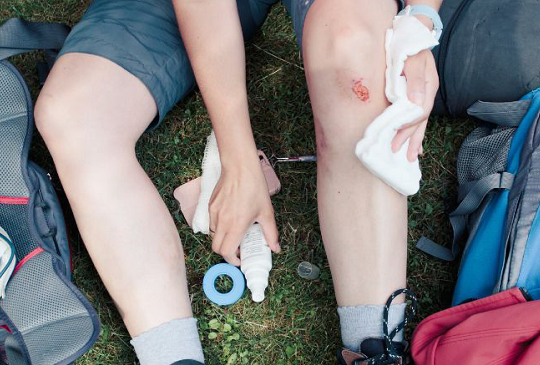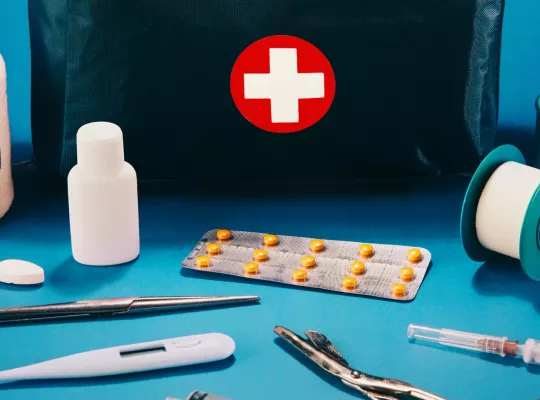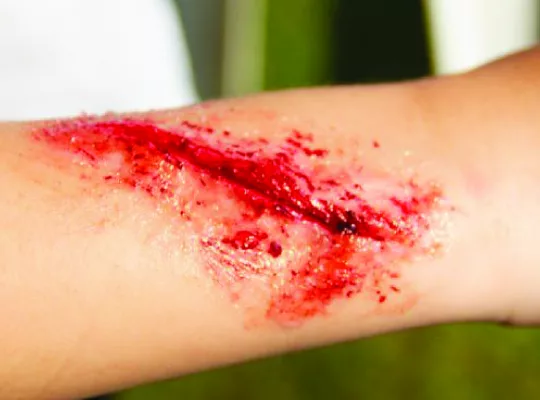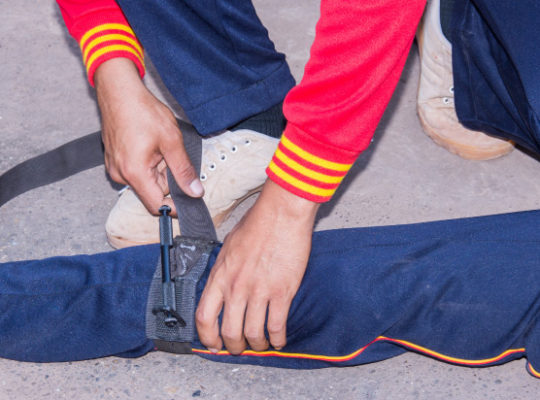When treating minor cuts or deep wounds, choosing between butterfly bandages and stitches can feel confusing. Each option comes with its own strengths, depending on the injury. Butterfly bandages offer a non-invasive way to close small cuts, making them a go-to for quick first aid.
You can find high-quality Butterfly Closures that are perfect for your first aid kit.
Stitches, on the other hand, are often needed for deeper wounds that require stronger support for healing.
The main pain point lies in knowing when to use each. A common mistake is underestimating a cut that actually needs stitches, risking infection or improper healing. Butterfly bandages may save time, but they aren’t always enough.
Did you know that wounds longer than half an inch often require stitches? Choosing the right option could make all the difference. In this guide, we’ll explore when to use each method and help you make an informed choice for proper wound care.
Defining Butterfly Bandages and Stitches
Butterfly bandages, also known as adhesive wound closure strips or Steri-Strips, are thin strips of adhesive material applied across the edges of a wound to hold them together. Many first-aid kits contain these bandages, allowing you to use them at home. They look like the insects they’re named after, with two wing-like strips on either side that pull the skin together. These bandages rest on top of the skin. They’re commonly used for minor cuts, lacerations, or incisions with clean edges and not under tension. The waterproof butterfly bandages provide a less invasive method of wound closure compared to stitches.
Stitches, or sutures, are medical threads that sew a wound’s edges together. This method involves inserting a needle through the skin, underneath the wound, and then pulling the thread through to create a stitch. Because of this, stitches aren’t usually something you do yourself at home; you’ll need to see a doctor for this procedure. Stitches are typically used for deeper or more significant injuries that require precise alignment of the tissues to promote proper healing. Sutures are made from various materials, including absorbable materials that dissolve over time and non-absorbable materials that need to be removed by a medical professional.
Differences Between Butterfly Bandages and Stitches
- Depth and Size of Wound: The depth and size of the wound play a significant role in determining whether butterfly bandages or stitches are more appropriate. Butterfly bandages are best suited for superficial wounds with clean edges that are not too deep. On the other hand, stitches are used for injuries that are deeper, larger, or involve multiple layers of tissue.
- Tension and Location: If an injury is located in an area with tension or movement, such as joints or areas prone to stretching, stitches may be more effective in providing secure closure. Stitches can hold wound edges together more robustly, making them suitable for wounds that might be pulled during healing.
- Healing Environment: The environment in which the wound will heal can also impact the choice between butterfly bandages and stitches. Wounds in areas prone to moisture or friction, like the hands or feet, might be better served by stitches, as they provide a more secure closure and are less likely to come off due to external factors.
- Risk of Infection: Both butterfly bandages and stitches can help reduce the risk of infection by keeping the wound edges together. However, stitches provide a complete barrier against contaminants because they’re threaded through the skin. If infection is a significant concern, stitches might be the preferred choice.
- Application and Removal: Butterfly bandages are easier and quicker to apply, often not requiring medical expertise. They are also less traumatic during removal compared to stitches, which might need to be removed by a healthcare professional. Stitches require more precise placement and skill during both insertion and removal.
When to Use Butterfly Bandages
- Minor Cuts and Lacerations: Butterfly bandages are excellent for minor cuts, abrasions, or shallow lacerations with clean edges that are not too deep.
- Small Surgical Incisions: Butterfly bandages can aid closure for small surgical incisions that do not need significant tension control.
- Emergency Situations: Butterfly bandages are convenient for situations where immediate wound closure is necessary, such as first aid scenarios.
When to Get/Use Stitches
- Deep Wounds: If a wound involves multiple layers of tissue, stitches are generally more effective in providing proper closure.
- Tension-Bearing Areas: Wounds in areas under tension, such as joints, may require stitches to ensure secure closure during movement.
- Cosmetically Important Areas: When wounds are in areas where cosmetic appearance is crucial, such as the face, stitches can provide a more precise closure, minimizing scarring.
- Complex Lacerations: Wounds with irregular edges or those that are difficult to align may benefit from stitches for meticulous wound approximation.
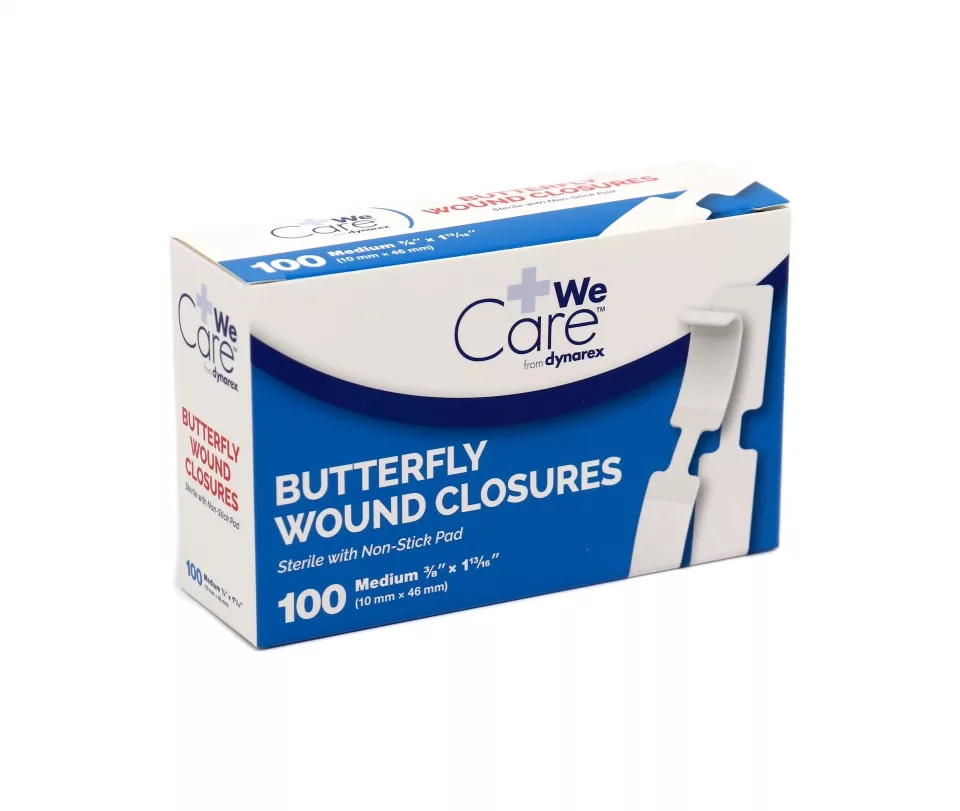
When Should You See Your Doctor?
When dealing with wounds, there are certain situations where it becomes essential to seek medical attention.
First, if the wound is deep or large, consulting a doctor is often necessary. These types of injuries, especially when they involve multiple layers of tissue, may require stitches to ensure proper healing and to avoid complications.
Additionally, wounds located in areas that experience frequent movement, such as joints, should be evaluated by a healthcare professional. In these cases, stitches provide stability, allowing the wound to heal securely despite the stress of movement.
For injuries on the face or other cosmetically important areas, seeing a doctor is strongly advised. Medical professionals have techniques that minimize scarring and improve cosmetic outcomes, which are especially important in these sensitive areas.
If the wound has irregular or jagged edges, it may be difficult to align properly without medical help. In these cases, stitches are often needed to ensure that the wound heals evenly and with the least amount of scarring possible.
Finally, signs of infection, such as redness, swelling, pus, or increased pain, indicate that professional care is necessary. Prompt attention from a doctor can help prevent further complications and ensure that the wound is securely closed, reducing the risk of ongoing infection.
Conclusion
In conclusion, both butterfly bandages and stitches have their place in wound closure, each catering to specific wound types, sizes, and locations. The appropriate method depends on the wound’s depth, size, tension, and location. While butterfly bandages are easy to apply and suitable for minor damages, stitches offer a more secure and precise closure for deeper or more complex injuries. Proper wound care, cleaning, and monitoring are essential to ensure optimal healing and minimize the risk of complications. If you need help deciding which method to use, seek professional medical advice.
FAQs
When Should I Use Butterfly Bandages Instead of Stitches?
Butterfly bandages are ideal for closing minor cuts or lacerations that have clean, straight edges. They work well for shallow wounds that don’t require deep closure, making them useful in first aid situations when stitches may not be immediately necessary.
What Are the Advantages of Using Butterfly Bandages?
Butterfly bandages are easy to use, non-invasive, and less painful during removal than stitches. They minimize skin penetration, reducing the risk of scarring. Additionally, they don’t require professional medical training to apply, making them perfect for minor, at-home wound care.
Can Butterfly Bandages Be Used on Any Part of the Body?
Butterfly bandages adhere best to areas that remain relatively still, such as the torso or arms. They may not stick well to areas with frequent movement, moisture, or hair, such as joints or the scalp, limiting their effectiveness in those locations.
How Should I Care for a Wound Closed with Butterfly Bandages?
Keep the wound clean and dry for the first 48 hours. Gently clean the area thereafter, avoiding any pulling on the bandages. If the bandages begin to loosen, trim them instead of removing them to ensure the wound stays closed during healing.

